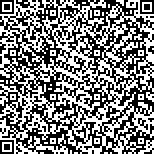| 蓝辉银,莫 淼.近距离加速部分乳房照射对比全乳照射在早期乳腺癌患者保乳术后放疗中的疗效差异:GEC-ESTRO APBI研究10年随访结果解读[J].肿瘤学杂志,2023,29(3):255-261. |
| 近距离加速部分乳房照射对比全乳照射在早期乳腺癌患者保乳术后放疗中的疗效差异:GEC-ESTRO APBI研究10年随访结果解读 |
| Accelerated Partial Breast Irradiation Using Sole Interstitial Multicatheter Brachytherapy Versus Whole-breast Irradiation for Early Breast Cancer After Breast-Conserving Surgery: Interpretation of 10-year Follow-up Results of GEC-ESTRO APBI Study |
| 投稿时间:2023-03-10 |
| DOI:10.11735/j.issn.1671-170X.2023.03.B015 |
|
 |
| 中文关键词: 乳腺癌 加速部分乳房照射 全乳照射 非劣效设计 |
| 英文关键词:breast cancer accelerated partial breast irradiation whole breast irradiation non-inferiority trial |
| 基金项目: |
|
| 摘要点击次数: 582 |
| 全文下载次数: 266 |
| 中文摘要: |
| 摘 要:GEC-ESTRO APBI是一项探索加速部分乳房照射(APBI)应用于早期乳腺癌保乳术后辅助放疗中的Ⅲ期临床研究,旨在对比多导管插植近距离照射技术的APBI与体外全乳照射(WBI)的疗效和副反应差异。研究设计上,采用国际多中心、非盲、随机对照、非劣效设计。主要研究终点为同侧乳腺局部复发率,次要研究终点为不良反应发生率、美容效果、10年无病生存率和10年总生存率等。研究共纳入1 328例早期乳腺癌患者,随机分配至外照射WBI组或多导管插植近距离照射APBI组,两组中位随访时间分别为10.3年和10.18年,符合分析条件的患者数分别为551例和633例。WBI组的10年局部复发率为1.58%(95%CI:0.37%~2.80%),而APBI组为3.51%(95%CI:1.99%~5.03%),两组局部复发差异率为1.93%(95%CI:-0.018%~3.870%,P=0.074)。7.5年和/或10年随访数据表明,两组不良事件大多为1~2级,3级副反应发生率方面,APBI组优于WBI组(1% vs 4%,P=0.021)。结果表明,多导管插植近距离照射技术APBI与外照射WBI相比,疗效类似且晚期副反应较少,可作为早期乳腺癌患者保乳术后辅助放疗的新选择。尽管该研究的10年随访结果进一步确认了APBI在早期乳腺癌保乳术后辅助放疗中的应用价值,但在非劣效研究设计的解读和临床实践中的推广应用等方面仍值得进一步讨论和思考。 |
| 英文摘要: |
| Abstract: GEC-ESTRO APBI is a phase Ⅲ clinical trial exploring the clinical application of accelerated partial breast irradiation(APBI) in early breast cancer patients who received breast-conserving surgery. The study aims to compare the efficacy and side effects of APBI using sole interstitial multicatheter brachytherapy with whole breast irradiation(WBI). This is an international, multi-center, non-blind, randomized, controlled non-inferiority clinical trial. The primary endpoint was ipsilateral local recurrence, and the secondary endpoints were the incidence of adverse reactions, cosmetic effects, 10-year disease-free survival and 10-year overall survival. A total of 1 328 patients with early breast cancer were included and randomly assigned to WBI or APBI group. The medium follow-up time of these two group was 10.3 years and 10.18 years, respectively. 551 in the WBI group and 633 in the APBI group were eligible for analysis. The 10-year local recurrence rate was 1.58%(95%CI: 0.37%~2.80%) in the WBI group and 3.51%(95%CI: 1.99%~5.03%) in the APBI group, with a recurrence difference of 1.93%(95%CI: -0.018%~3.870%, P=0.074). At 7.5 and/or 10 years follow-up, most of the adverse events in both groups were grade 1 and grade 2, and patients in the APBI group had a lower incidence of grade 3 late side-effects than that in the WBI group(1% vs 4%, P=0.021). The results suggest that postoperative APBI using multicatheter brachytherapy is a valuable alternative in patients with early breast cancer after breast-conserving surgery in terms of similar treatment efficacy and fewer late side-effects, however, further discussion and consideration is necessary for either the study design or clinical outcome interpretations. |
|
在线阅读
查看全文 查看/发表评论 下载PDF阅读器 |